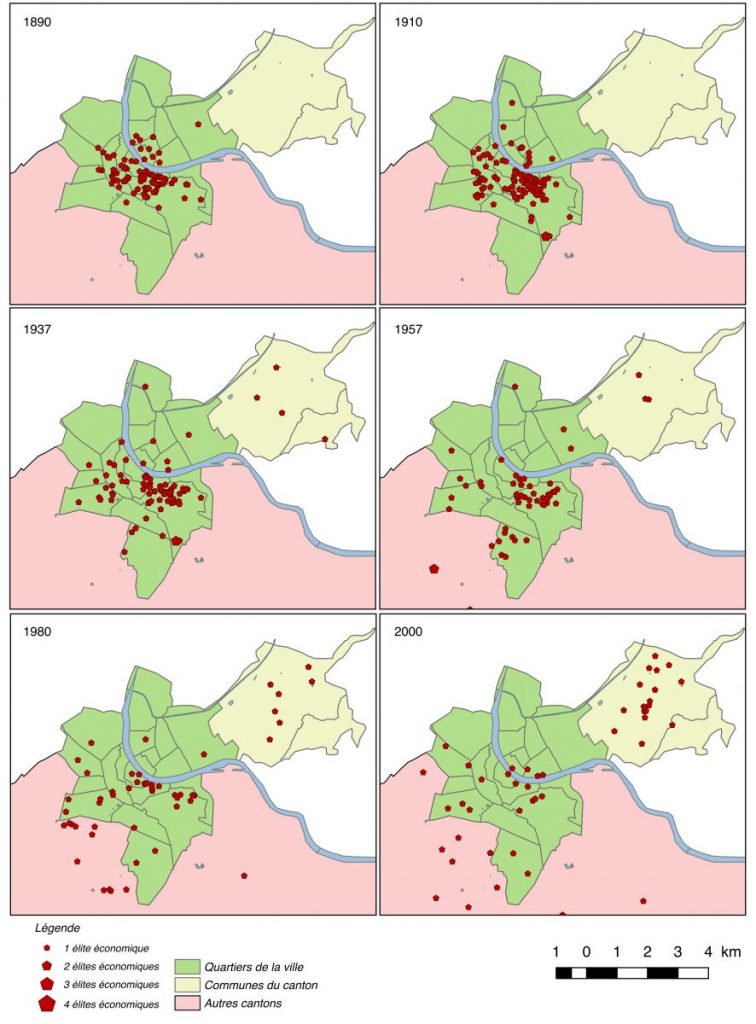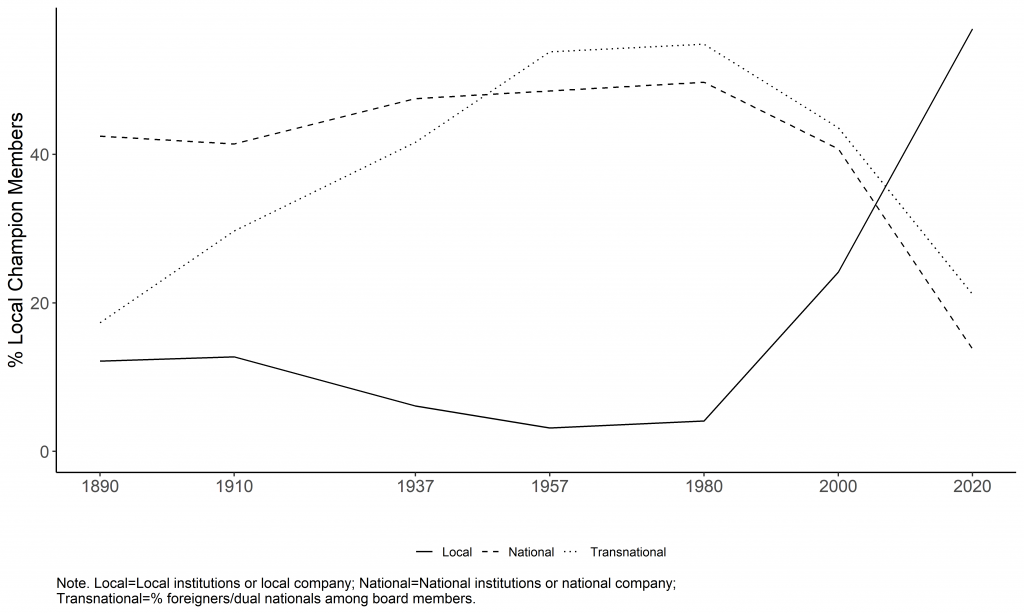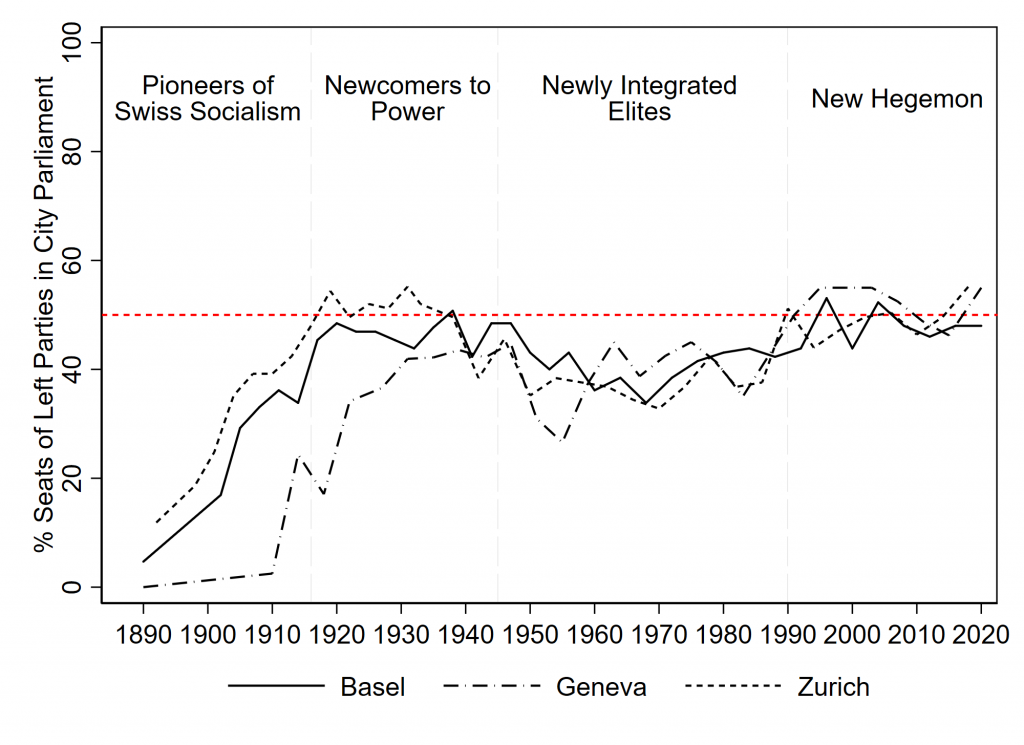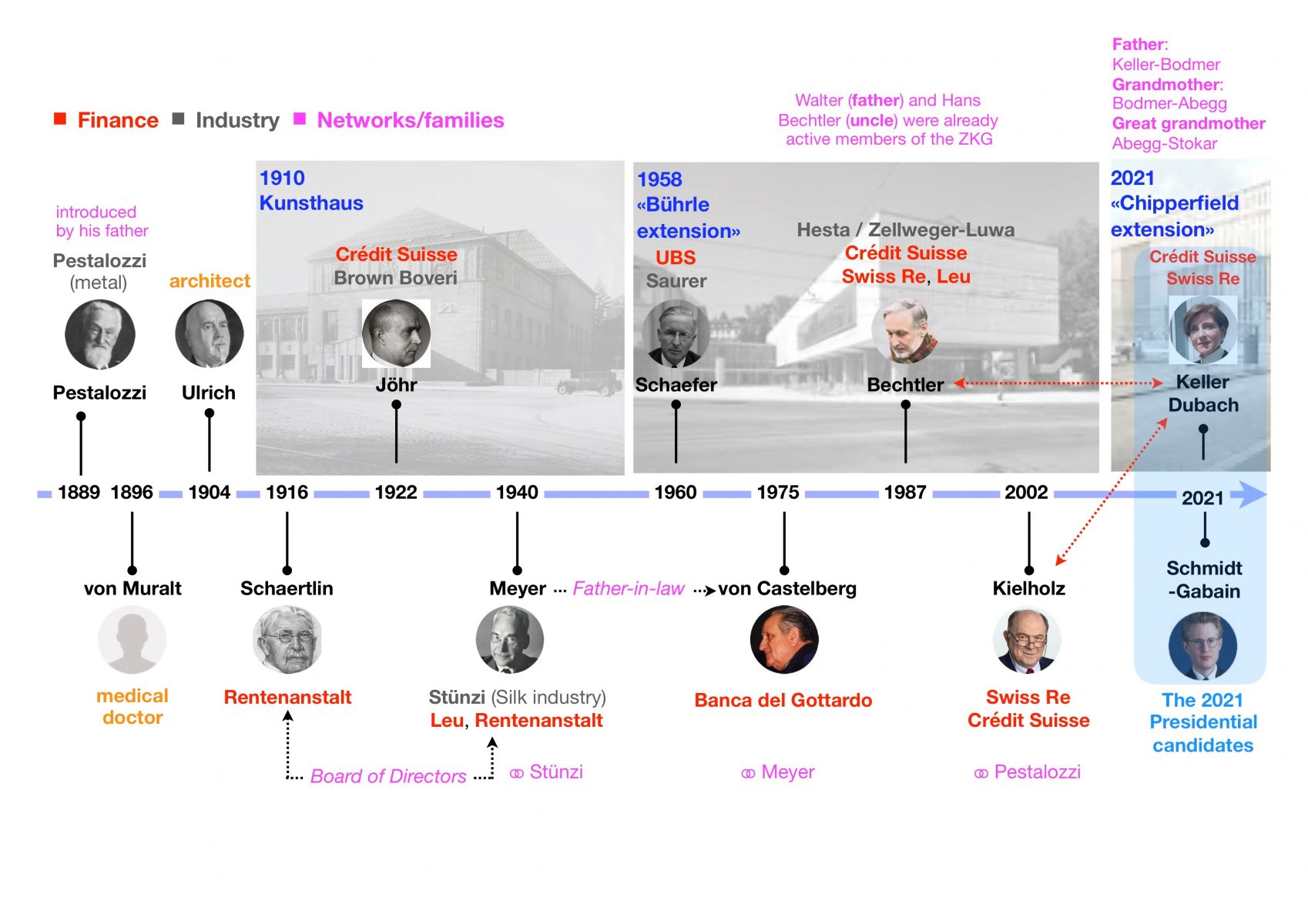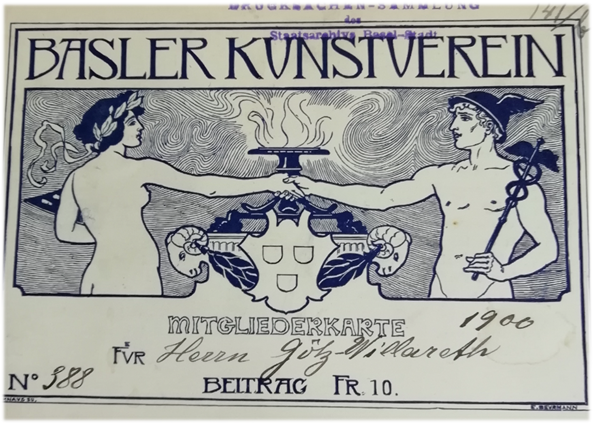Together with Roberto Di Capua, Sinergia team members Pierre Benz and Michael Strebel have co-authored a paper in which they assess the evolution of urban elites residential choices over the 20th century. Scholars generally agree that elites do not only distinguish themselves from non-elites through social practices, but also physically segregate themselves through their residential choices. Yet, as of now, only few studies systematically analyze elites’ place of residence as a form of differentiation and distinction. To contribute to this endeavor, the authors analyze the evolution of elites’ favored place of residence in conjunction with the transformation of urban spaces in the 20th century. They use data from the Sinergia research project on local elites from 1890 to 2020, which identifies elites based on a positional approach in different Swiss cities. With this data that includes information on elites’ place of residence, we analyze the transformation of academic, economic, and political elites’ residential choices from 1890 to 2000 in the two cities of Basel and Geneva. The results show that elites continuously deconcentrate and spread from the center city to surrounding municipalities and to other places in Switzerland. In addition, the authors also identify certain elite neighborhoods in both cities which are home to a disproportional number of elites.
→ Paper
